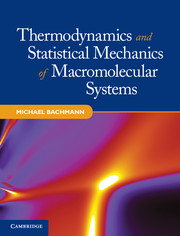Book contents
- Frontmatter
- Dedication
- Contents
- Preface and outline
- 1 Introduction
- 2 Statistical mechanics: A modern review
- 3 The complexity of minimalistic lattice models for protein folding
- 4 Monte Carlo and chain growth methods for molecular simulations
- 5 First insights to freezing and collapse of flexible polymers
- 6 Crystallization of elastic polymers
- 7 Structural phases of semiflexible polymers
- 8 Generic tertiary folding properties of proteins on mesoscopic scales
- 9 Protein folding channels and kinetics of two-state folding
- 10 Inducing generic secondary structures by constraints
- 11 Statistical analyses of aggregation processes
- 12 Hierarchical nature of phase transitions
- 13 Adsorption of polymers at solid substrates
- 14 Hybrid protein–substrate interfaces
- 15 Concluding remarks and outlook
- References
- Index
13 - Adsorption of polymers at solid substrates
Published online by Cambridge University Press: 05 May 2014
- Frontmatter
- Dedication
- Contents
- Preface and outline
- 1 Introduction
- 2 Statistical mechanics: A modern review
- 3 The complexity of minimalistic lattice models for protein folding
- 4 Monte Carlo and chain growth methods for molecular simulations
- 5 First insights to freezing and collapse of flexible polymers
- 6 Crystallization of elastic polymers
- 7 Structural phases of semiflexible polymers
- 8 Generic tertiary folding properties of proteins on mesoscopic scales
- 9 Protein folding channels and kinetics of two-state folding
- 10 Inducing generic secondary structures by constraints
- 11 Statistical analyses of aggregation processes
- 12 Hierarchical nature of phase transitions
- 13 Adsorption of polymers at solid substrates
- 14 Hybrid protein–substrate interfaces
- 15 Concluding remarks and outlook
- References
- Index
Summary
Structure formation at hybrid interfaces of soft and solid matter
The requirement of higher integration scales in electronic circuits, the design of nanosensory applications in biomedicine, and also the fascinating capabilities of modern experimental setup with its enormous potential in polymer and surface research, have produced an increased interest in macromolecular structural behavior at hybrid interfaces of organic and inorganic matter [273–278]. Relevant processes include, e.g., wetting [279–281], pattern recognition [282–284], protein–ligand binding and docking [285–287], effects specific to polyelectrolytes at charged substrates [288] as well as electrophoretic polymer deposition and growth at surfaces [289].
The recent developments of experimental single-molecule techniques at the nanometer scale, e.g., by means of atomic force microscopy (AFM) [290, 291] and optical tweezers [292, 293], allow for a more detailed exploration of structural properties of polymers in the vicinity of adsorbing substrates [278]. The possibility to perform such studies is of essential biological and technological significance. From the biological point of view, the understanding of the binding and docking mechanisms of proteins at cell membranes is important for the reconstruction of biological cell processes. Similarly, specificity of peptides and binding affinity to selected substrates are relevant features that need to be taken into account for potential applications in nanoelectronics and pattern recognition nanosensory devices on a molecular basis [282].
In this chapter, theoretical approaches to the modeling of hybrid systems of soft and solid matter will be discussed. A comprehensive analysis of conformational transitions experienced by polymers in the binding process, of the phase-diagram structure, and of dominant polymer conformations in these phases can only be performed efficiently by means of computer simulations of hybrid physisorption models on mesoscopic scales.
- Type
- Chapter
- Information
- Publisher: Cambridge University PressPrint publication year: 2014



